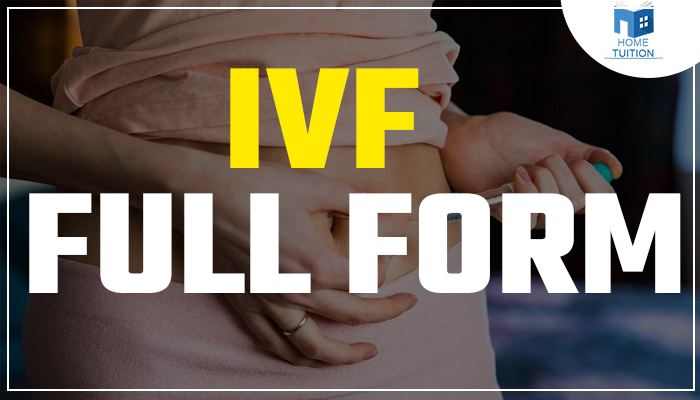The full form of IVF is In Vitro Fertilization. The most used process is ART (assisted reproduction technology) in vitro fertilization. IVF is performed under restrictive laboratory conditions by fusing eggs from a female donor and sperm from a male donor outside the body. The baby is known as a test tube baby or zygote. After the embryo is cultured, the embryo is transferred to the mother's uterus. This procedure is widely used in women with blocked or weakened fallopian tubes.
History
The IVF method was discovered by Patrick Steptoe and Robert G. Edwards in the early 1970s. This method has been adopted as a solution to solve female infertility caused by various factors such as fallopian tube blockage due to which the egg is not fertilized by the sperm.
When the first IVF was done, the process of stimulating ovulation with injectable hormones was not done and instead an egg was removed after a normal ovulation cycle, this egg was fertilized and implanted back into the uterus. This was called a natural IVF cycle. IVF is considered one of the "assisted reproductive technologies" (ART).
Either the fertilized egg is injected back into the same female whose egg was taken for fertilization, or it can be injected into the womb of another female, who is called a surrogate mother. It is also called gestational surrogacy. In 2010, Robert G. Edwards was awarded the Nobel Prize in Medicine.
Necessary steps to follow for IVF
There are four basic steps to follow to achieve IVF which are:
- Step 1
In the first step, fertility treatments are used in the woman's body to stimulate egg development. Since some eggs may not mature or fertilize after recovery, many eggs are needed.
- Step 2
Minor surgery to retrieve the eggs is part of the second step. A hollow needle guided by ultrasound scans is inserted into the pelvic cavity to remove the ovarian follicles from the ovary. Follicular fluids are then scanned to remove available eggs.
- Step 3
In the third stage, in the laboratory, the eggs are fertilized by male sperm. The eggs are monitored to ensure that fertilization and cell division are taking place. The embryos are allowed to mature for 2 to 6 days before being transferred to the uterus.
- Step 4
The four- to five-day-old embryo is introduced into the woman's uterus in the fourth stage using a tube or a thin, small catheter. Implantation usually occurs about six to ten days after egg retrieval. The woman is examined after approximately 9 to 12 days to ensure that the embryo is successfully implanted.
Related Information
Frequently Asked Questions
The full form of IVF is In Vitro Fertilization. It is a medical procedure used to assist individuals and couples with infertility. IVF involves combining an egg and sperm outside the body in a laboratory dish, where fertilization occurs, and the resulting embryo is then implanted into the uterus for pregnancy.
In the IVF process, the first step involves stimulating the ovaries to produce multiple eggs using fertility medications. These eggs are then retrieved from the ovaries and fertilized with sperm in a lab. Once fertilization occurs and embryos are created, the best quality embryos are selected and transferred into the woman’s uterus for implantation and potential pregnancy. If successful, the pregnancy is monitored through blood tests and ultrasounds.
IVF treatment is often recommended for individuals and couples facing infertility due to various reasons, such as blocked fallopian tubes, low sperm count, endometriosis, unexplained infertility, or hormonal imbalances. It is also an option for people with genetic conditions or those who are considering surrogacy or egg/sperm donation as part of their family planning. IVF can help individuals achieve pregnancy when other fertility treatments have not been successful.